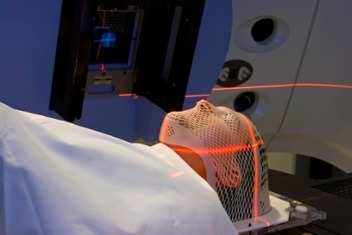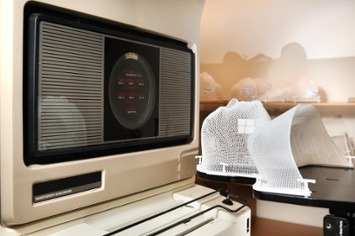In modern radiation therapy, imaging plays a critical role in delivering safe, accurate, and effective…

Can I Do Stereotactic Radiosurgery (SRS) with My Varian 2100C/CD, EX, iX, or Trilogy?
A question that we hear often at ROS is “we are looking for a pre-owned, Varian linear accelerator with SRS capabilities.” The answer to this question requires a basic understanding of the some of the common models of Varian linear accelerators that are available in the pre-owned equipment market: Clinac 2100C, 2100C/D, 21EX, 23EX, iX, DHX and Trilogy.
Varian is at the forefront of innovation in linear accelerator technology. Because of the gradual advances in technology with each new Varian model, it’s easy to get confused with the capabilities of each model (i.e. 2100C/CD, EX, iX and Trilogy). In a prior blog, we discussed when you should upgrade your linear accelerator. Here we will specifically address stereotactic radiosurgery (SRS) capability.
Stereotactic Radiosurgery (SRS) is a nonsurgical treatment method used primarily to treat head and neck tumors. Using a precise (1 to 2 mm), targeted ionizing beam of radiation, it can treat the afflicted area while preserving the healthy tissue surrounding it. One of the key benefits is that this treatment method can use fewer treatments overall than traditional radiation treatment methods.


Stereotactic Body Radiation Therapy (SBRT) is SRS but rather than applied to the head and neck, it refers to this treatment used on other parts of the body, such as the lungs or liver. SBRT is also a treatment method that can be utilized when the patient is unable to receive surgical treatment.
All Varian linac models are capable of delivering some level or interpretation of SRS by use of one or more options and accessories: cones (wherein X-ray cone-beams converge on the target area for precise treatment), immobilization devices, select dose rates, multi-leaf collimators (MLCs), and MV/KV imaging systems. The on-board KV imaging system (which Varian calls “OBI”), which can come with any of these models, delivers high-res, low-dose digital images to make patient positioning and treatment planning as efficient as possible. All Varian linear accelerator models can also be upgraded to have Micro-MLCs (such as Varian’s HD MLC), which have a smaller overall field size designed to target tumors more precisely, and is ideally suited for head and neck treatment. However, the level of SRS differs between Varian models.
The 2100C/CD and EX models can be purchased with 80-leaf MLC or 120-leaf MLC, OBI, Cone-Beam CT (CBCT), and RapidArc/VVMAT technologies, but the maximum photon dose rate for these models is 600 MU/min. Many buyers of these models will use cones for SRS treatments.
The iX model is also available with 80-leaf MLC or 120-leaf MLC, OBI, Cone-Beam CT (CBCT), and RapidArc/VVMAT. As with the 2100C/CD and EX models, it has a standard dose rate of 600 MU/min. However, the SRS mode upgrade to this model will increase the photon dose rate to 800 MU/min.
The Varian Trilogy is similar to the 2100C/CD, EX and iX models, but also a few additional features over the other models. The most significant advantage is that it comes standard from the factory with a photon dose rate in SRS mode up to 1,000 MU/min. This model also has the option of the Millennium HD 120-leaf MLC, a technology with even more precise inner leaves than the standard Millennium 120-leaf. This is limited field size design dedicated primarily for only SRS/SBRT treatments.
So when you are considering the purchase of a pre-owned Varian linear accelerator, consider the capabilities of the machine and the upgrade paths of each—and not just the actual model name.
To see further comparisons between the various Varian linac models, please visit our Resources section or contact info@OncologySystems.com for further information.




Comments (0)